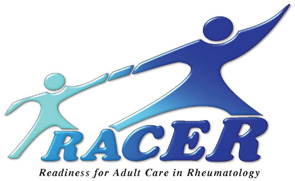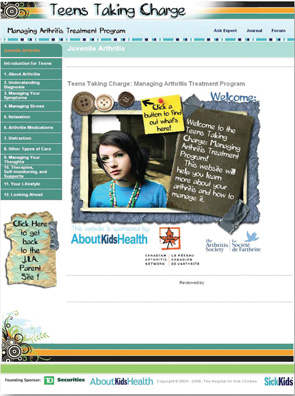
The Readiness for Adult Care in Rheumatology (RACER) questionnaire is designed to measure transition readiness.
Youth and their parents often have a number of concerns about moving on to adult care. Pediatric centers are family centered. The interaction is informal and relaxed, parents are regarded as expert partners, and many centers have a multidisciplinary team, with rehabilitation and psychosocial support. Parents who have played an active role in managing their child’s health worry that they will be sidelined by adult HCPs and that their children are incapable of assuming responsibility for their medical condition. Patients and families often feel they are being abandoned by a healthcare team that has followed them, in some cases, since early childhood. They worry about starting over with a new HCP who doesn’t know their history. Changes or lapses in insurance coverage may lead to gaps in therapy. Unprepared patients may avoid making the first appointment.
Pediatric centers are family centered. The interaction is informal & relaxed, parents are regarded as expert partners, & many centers have a multidisciplinary team, with rehabilitation & psychosocial support.
Transition Challenges for HCPs
Adult centers are patient focused, with an expectation that patients manage their health autonomously. The interaction is more formal and business like, and it is less common to have the support of a multidisciplinary team. Adult HCPs may have limited knowledge of pediatric rheumatic diseases and an insufficient understanding of adolescent development. They are often frustrated with youth who don’t take responsibility for their health, parents who are overbearing and overly involved, and medical records that are inadequate or nonexistent.
Unique Features of JIA
When caring for adults with JIA, it’s important to recognize that JIA has unique features that distinguish it from adult RA. Chronic inflammation of the immature skeleton can cause growth disturbances, including short stature and limb length discrepancies, particularly in the lower extremities. Several prospective studies show that up to 75% of JIA patients have associated temporomandibular joint (TMJ) arthritis.6,7 Uncontrolled TMJ inflammation can cause microretrognathia, jaw asymmetry, pain and compromised function, including difficulty chewing and speaking. Chronic asymptomatic anterior uveitis, seen in up to 25% of JIA patients, can lead to development of irreversible scarring, glaucoma, cataracts and loss of vision.8

The Internet is a major resource for health information and is ideal for
providing healthcare services for young patients transitioning to adult care.
JIA Outcomes
Although few good long-term outcome studies exist and most don’t reflect treatment with biologics, data from North American and European centers show that between 40 and 70% of young adults with JIA will have persistent active arthritis.9-17 JIA patients have been shown to have functional limitations, lower employment rates and impaired quality of life.18-21 More than half of patients with uveitis will have persistent eye inflammation in adulthood.22 Because a significant number of JIA patients will require ongoing care by adult healthcare providers, it’s critical that youth be provided with developmentally appropriate skills that will allow them to transition and move on to the adult health system in a timely fashion.
Timing for Transition Interventions
Transition needs to start early. Data from the UK, U.S. and Canada support starting transitional care between the ages of 12 and 14.5,23-25 Youth should be trained with respect to self-management, self-advocacy and assertiveness. They should acquire knowledge about their medical condition and its treatment, and understand how their condition can affect recreational activities, vocational and educational plans, sexuality, reproduction and independent living. Although transitional care should be youth centered, parents are a key resource of support and knowledge for young people and should be included in the process.23
Obstacles for Transition Programs
A number of transition programs have been developed for youth with rheumatic conditions. These include education initiatives directed at teens during routine clinic visits, and dedicated transition clinics staffed by specialists that may include adolescent medicine, pediatric and adult rheumatology experts. There can be considerable obstacles to teaching transition skills, including geographic barriers, particularly for youth living in rural or remote areas, language barriers, and lengthy wait times to access services. In addition, there can be significant costs for families, including therapy-associated expenses, and absences from school and work.
Social Media & Transition
Social media can be a valuable tool to help overcome some of these obstacles. The Internet has become a major resource for health information and is a powerful mode of communication for youth, making it ideally suited to provide online healthcare services to this population.


